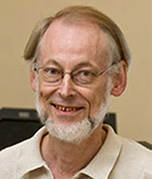1 George Allen
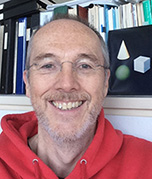 George Allen has worked on the development of the NX CAD/CAM system (previously Unigraphics) from 1977 to present, mostly in geometric modeling areas, holding various positions in R&D, Marketing, and Strategic Planning. He advocated the use of solid modeling beginning in the early 1980s, and helped to popularize the technology. Specifically, he directed the development of an early commercial system, UNISOLIDS, based on PADL-2, which was released in 1983. He also led the implementation of free-form modeling capabilities in Unigraphics (based on Coons and NURBS surfaces) in the early 1980s. In addition to his R&D work, George has also helped companies use geometric modeling technology more effectively in their engineering and manufacturing activities, including GM, Nissan, Honda, Boeing, Canon, and many others. George was elected a McDonnell Douglas Corporation Fellow in 1989, and elected EDS Fellow in 2003. In the academic field, George taught graduate course on Computational Geometry for CAD/CAM in the Department of Mechanical Engineering at U. C. Irvine from 1985 to 1988. He organised SIGGRAPH tutorials on solid modeling from 1984 to 1988 and he was co-chair of the ACM Symposium on Solid Modelling and Applications, 1993-1997, and Honorary Chairman of the joint ACM/SIAM Conference on Geometric Design in 2009. Since 2014, he has served as an Associate Editor of the journal “Computer-Aided Design”.
George Allen has worked on the development of the NX CAD/CAM system (previously Unigraphics) from 1977 to present, mostly in geometric modeling areas, holding various positions in R&D, Marketing, and Strategic Planning. He advocated the use of solid modeling beginning in the early 1980s, and helped to popularize the technology. Specifically, he directed the development of an early commercial system, UNISOLIDS, based on PADL-2, which was released in 1983. He also led the implementation of free-form modeling capabilities in Unigraphics (based on Coons and NURBS surfaces) in the early 1980s. In addition to his R&D work, George has also helped companies use geometric modeling technology more effectively in their engineering and manufacturing activities, including GM, Nissan, Honda, Boeing, Canon, and many others. George was elected a McDonnell Douglas Corporation Fellow in 1989, and elected EDS Fellow in 2003. In the academic field, George taught graduate course on Computational Geometry for CAD/CAM in the Department of Mechanical Engineering at U. C. Irvine from 1985 to 1988. He organised SIGGRAPH tutorials on solid modeling from 1984 to 1988 and he was co-chair of the ACM Symposium on Solid Modelling and Applications, 1993-1997, and Honorary Chairman of the joint ACM/SIAM Conference on Geometric Design in 2009. Since 2014, he has served as an Associate Editor of the journal “Computer-Aided Design”.
2 Chandrajit Bajaj
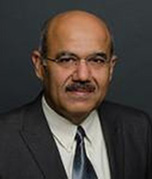 Chandrajit Bajaj has made fundamental mathematical and computer science contributions to a wide array of computational sciences, including geometric and solid modeling, image processing, computer graphics, data analysis and visualization. He has been prolific in each of these subfields, progressively focusing and mastering the sub-area over his three decades of academic research, education and service activities. He is a Fellow of the American Association for the Advancement of Science (AAAS), a Fellow of the Association of Computing Machinery (ACM), a Fellow of University of Texas Institute for Cellular and Molecular Biology (ICMB), a Fellow of the Institute of Electrical and Electronics Engineers (IEEE), and a Fellow of the Society of Industrial and Applied Mathematics (SIAM). He has won the University of Texas Faculty research award, the Dean Research Assignment award, the ICMB research award, and also twice won the ICES Moncreif Grand Challenge research. He has chaired and co-chaired over 10 SIAM, ACM, IEEE conferences and workshops and has given over 15 keynote addresses. He has been an associate editorial member of SIAM Journal on Imaging Sciences, and ACM Transactions on Graphics, and continues for ACM Computing Surveys and Intl. Journal of Computational Geometry and Applications. A majority of his PhD’s and postdocs are now faculty in academia, DOE national labs or geometric processing/meshing companies and remain intimately involved in geometric, solid modeling and computational visualization activities.
Chandrajit Bajaj has made fundamental mathematical and computer science contributions to a wide array of computational sciences, including geometric and solid modeling, image processing, computer graphics, data analysis and visualization. He has been prolific in each of these subfields, progressively focusing and mastering the sub-area over his three decades of academic research, education and service activities. He is a Fellow of the American Association for the Advancement of Science (AAAS), a Fellow of the Association of Computing Machinery (ACM), a Fellow of University of Texas Institute for Cellular and Molecular Biology (ICMB), a Fellow of the Institute of Electrical and Electronics Engineers (IEEE), and a Fellow of the Society of Industrial and Applied Mathematics (SIAM). He has won the University of Texas Faculty research award, the Dean Research Assignment award, the ICMB research award, and also twice won the ICES Moncreif Grand Challenge research. He has chaired and co-chaired over 10 SIAM, ACM, IEEE conferences and workshops and has given over 15 keynote addresses. He has been an associate editorial member of SIAM Journal on Imaging Sciences, and ACM Transactions on Graphics, and continues for ACM Computing Surveys and Intl. Journal of Computational Geometry and Applications. A majority of his PhD’s and postdocs are now faculty in academia, DOE national labs or geometric processing/meshing companies and remain intimately involved in geometric, solid modeling and computational visualization activities.
3 Ian Braid, 2008 Pierre Bézier Award Recipient
http://solidmodeling.org/bezier-award/i-braid-a-grayer-and-c-lang/
Ian C. Braid did his thesis at the CAD Group at the Computer Laboratory, Cambridge University, under the supervision of Charles Lang. He developed the BUILD boundary representation modeller, the most advanced such system of its day. Whereas other systems used faceting to avoid the problems of calculating intersections between non-planar surfaces, the BUILD team tackled such problems head-on. Ian Braid was awarded his PhD in 1973. Ian Braid then developed a completely new solid modeller, BUILD 2, which was a significant advance as it made a clear separation of geometry and topology in both its data structures and algorithms. This made it possible to implement generalised boolean operations and to systematically extend the geometric coverage and the functionality of the modeller with operations such as blending. Subsequently other PhD theses supervised by Ian and based on the BUILD modellers included Dimensions and Tolerances (Hillyard 1978), Feature Recognition (Kyprianou 1980), Automatic 2D and 3D Mesh Generation (Wördenweber 1982) and Surface Intersections (Solomon 1986). These theses were some of the earliest contributions to solid modelling and to applications. At Shape Data Ltd., he contributed to the development of the ROMULUS modeller, which was based on the ideas of the BUILD modellers, but engineered as a commercial product written in Fortran. At the end of 1985 Alan, Ian and Charles left Shape Data to form Three-Space Ltd which developed ACIS, a totally new solid modeller that improved the software architecture and the precision of numerical calculations.
4 Pere Brunet
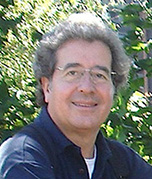 Pere Brunet started the UPC research group on Solid Modeling in 1979. He pioneered the use of hierarchical representations, discrete models and octrees for computer aided geometric design and solid modeling. With a first paper at Eurographics 1980, he produced a number of significant contributions that have established him as a leading researcher worldwide in the area, with results that have helped to shape the field of Solid Modeling in areas including multiresolution models, space subdivision representations, extended octrees and boolean operations, volume-based geometry simplification and repair, model reconstruction from discrete and binary volume models and point clouds, optimized solid reconstruction from volume data and time-critical model inspection. In addition, his research has led to several application-oriented projects in the areas of solid modeling, computer aided design of very complex systems and assemblies and virtual reality. He has organized several International Conferences and Dagstuhl Seminars. He has been a member of the Editorial Board of International Journals, including Computer-Aided Design, Computer-Aided Geometric Design, IEEE Transactions on Visualization and Computer Graphics, Computer Graphics Forum and Computers & Graphics. He has trained several generations of researchers in the area. His group has been the pioneer on Solid Modeling research in Spain, leading afterwards to the creation of many other research groups in the country.
Pere Brunet started the UPC research group on Solid Modeling in 1979. He pioneered the use of hierarchical representations, discrete models and octrees for computer aided geometric design and solid modeling. With a first paper at Eurographics 1980, he produced a number of significant contributions that have established him as a leading researcher worldwide in the area, with results that have helped to shape the field of Solid Modeling in areas including multiresolution models, space subdivision representations, extended octrees and boolean operations, volume-based geometry simplification and repair, model reconstruction from discrete and binary volume models and point clouds, optimized solid reconstruction from volume data and time-critical model inspection. In addition, his research has led to several application-oriented projects in the areas of solid modeling, computer aided design of very complex systems and assemblies and virtual reality. He has organized several International Conferences and Dagstuhl Seminars. He has been a member of the Editorial Board of International Journals, including Computer-Aided Design, Computer-Aided Geometric Design, IEEE Transactions on Visualization and Computer Graphics, Computer Graphics Forum and Computers & Graphics. He has trained several generations of researchers in the area. His group has been the pioneer on Solid Modeling research in Spain, leading afterwards to the creation of many other research groups in the country.
5 Paul de Casteljau, 2012 Pierre Bézier Award Recipient
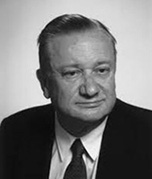 http://solidmodeling.org/bezier-award/paul-de-faget-de-casteljau/
http://solidmodeling.org/bezier-award/paul-de-faget-de-casteljau/
Paul de Faget de Casteljau a développé au moins trois idées fondamentales importantes dans la modélisation des courbes et surfaces. La première idée consiste en l’utilisation des polynômes de Bernstein en tant que functions de base pour les courbes et surfaces polynomiales paramétriques. La deuxième concerne l’utilisation de polynômes multilinéaires comme une représentation des polynômes de Bernstein, fournissant un outil fondamental pour la compréhension et les calculs sur ces surfaces. La troisième contribution est l’utilisation de cette forme multilinéaire pour développer un algorithme d’évaluation efficace et stable. Les contributions de Paul de Casltejau sont moins largement connues qu’elles ne devraient être parce qu’il n’a pas été en mesure de les publier jusqu’à ce que des idées équivalentes avaient été réinventée indépendamment par d’autres, parfois sous des formes assez différentes. Parce qu’il n’a pas été autorisé à publier ses premiers travaux, nous appelons maintenant les polynômes avec une base de Bernstein “polynômes de Bézier”, bien que Bézier lui-même n’a pas utilisé les points de contrôle, mais leurs premiers vecteurs de différence.
6 Elaine Cohen, 2009 Pierre Bézier Award Recipient
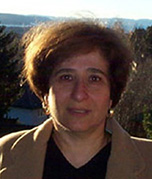 http://solidmodeling.org/bezier-award/richard-riesenfeld-and-elaine-cohen/
http://solidmodeling.org/bezier-award/richard-riesenfeld-and-elaine-cohen/
Elaine Cohen research work was inspired in part by a 1970 visit that graduate students Cohen and Riesenfeld paid to Pierre Bézier in Paris to learn more about the ideas behind Bézier’s new methods for CAD/CAM. Cohen collaborated with Tom Lyche and Richard Riesenfeld to develop the Oslo Algorithms to enable simultaneous knot insertion at multiple locations in a B-spline representation. In the areas of representational algorithms, Cohen and Riesenfeld have contributed several seminal papers in CAGD, including important works in box splines, cone splines, and simplex splines. While somewhat more theoretical in nature, these papers, like all of their works, have been done with an eye toward applications. Throughout her career, she has always tied theoretical advances to practical gains in geometric modeling. Evidence to this effect is the spin-off company Engineering Geometry Systems (EGS) that Cohen and Riesenfeld founded, which in 1995 introduced the FeatureCAM line of products. The hallmark of this company has been the notion of providing very high level mechanical design features linking manufacturing with geometry in a straightforward, intuitive manner. Cohen and Riesenfeld have developed a strong academic program in CAGD that has been the training grounds for many students who have become contributors to the field. They have coauthored a significant reference and text for advanced study of B-spline methods in CAGD. Their sustained leadership and vision over decades of important research contributions and teaching has left their names inseparable from the field of freeform geometric modeling.
7 Gershon Elber
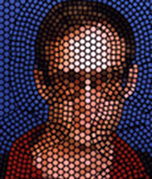 Gershon Elber is a professor in the Computer Science Department, Technion, Israel. His research interests span computer aided geometric designs and computer graphics. Professor Elber is a continuous contributing member of the SMA community since 1993, the 2nd SPM meeting in Montreal, Canada. Since then, he has published 27 papers in total in all the SMA (and later on SPM) meetings, with an average of almost two papers per meeting, out of which, he received five best (and second best) paper awards. Prof. Elber is a member of the SMA/SPM committee since 1999 and was the paper co-chair of SMA in 2003 and in 2004 and the conference co-chair of SPM in 2010 and 2015, respectively, and delivered two plenary presentations in SPM, in 2007 and 2013. Prof. Elber was a member of the Executive Committee of the SMA in 2008-2010 and in 2015 and was the head of the Executive Committee of the SMA in 2009. Gershon Elber received the Ray and Miriam Klein (the Technion Research Award) in 1998, the Hershel Rich – Technion Innovation Award in 2002 for “Virtual Marionettes – Remote Collaboration Animation and Interaction”, the CodeArt award in 2003 (National Art in Computing Contest, third place), and the John Gregory Memorial Award, 2011, in “Appreciation for Outstanding Contributions in Geometric Modeling”.
Gershon Elber is a professor in the Computer Science Department, Technion, Israel. His research interests span computer aided geometric designs and computer graphics. Professor Elber is a continuous contributing member of the SMA community since 1993, the 2nd SPM meeting in Montreal, Canada. Since then, he has published 27 papers in total in all the SMA (and later on SPM) meetings, with an average of almost two papers per meeting, out of which, he received five best (and second best) paper awards. Prof. Elber is a member of the SMA/SPM committee since 1999 and was the paper co-chair of SMA in 2003 and in 2004 and the conference co-chair of SPM in 2010 and 2015, respectively, and delivered two plenary presentations in SPM, in 2007 and 2013. Prof. Elber was a member of the Executive Committee of the SMA in 2008-2010 and in 2015 and was the head of the Executive Committee of the SMA in 2009. Gershon Elber received the Ray and Miriam Klein (the Technion Research Award) in 1998, the Hershel Rich – Technion Innovation Award in 2002 for “Virtual Marionettes – Remote Collaboration Animation and Interaction”, the CodeArt award in 2003 (National Art in Computing Contest, third place), and the John Gregory Memorial Award, 2011, in “Appreciation for Outstanding Contributions in Geometric Modeling”.
8 Bianca Falcidieno
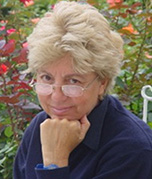 Bianca Falcidieno is a Research Director at the Institute of Applied Mathematics and Information Technologies of the National Research Council of Italy (CNR), and she was the chair of the CNR Research Area of Genova (2009-2013). Her research focuses on shape modeling, computer graphics, computational mathematics and knowledge technologies. She has been leading and coordinating research at international level in these topics strongly interacting with industrial and social application fields: from industrial design to geographic information systems, from manufacturing to medicine, from multimedia to cultural heritage. Bianca Falcidieno started the research group in Solid Modeling at the CNR in 1981 and has made and led numerous theoretical and practical contributions towards the theoretical foundations and analysis of boundary representations for solids. She pioneered new research fields on shape and solid modeling and analysis, based on a multidisciplinary approach not only centered on pure geometric and graphical aspects but also on semantics, which formalizes both the meaning of objects and the knowledge domain within which the 3D models are used. She has organized and chaired various venues (conferences and journals) where numerous papers on Solid Modeling have appeared. She obtained significant funding for research in solid modeling. She has trained several generations of researchers in this area. She is a role model in many ways, a pioneer, and a major player in the field.
Bianca Falcidieno is a Research Director at the Institute of Applied Mathematics and Information Technologies of the National Research Council of Italy (CNR), and she was the chair of the CNR Research Area of Genova (2009-2013). Her research focuses on shape modeling, computer graphics, computational mathematics and knowledge technologies. She has been leading and coordinating research at international level in these topics strongly interacting with industrial and social application fields: from industrial design to geographic information systems, from manufacturing to medicine, from multimedia to cultural heritage. Bianca Falcidieno started the research group in Solid Modeling at the CNR in 1981 and has made and led numerous theoretical and practical contributions towards the theoretical foundations and analysis of boundary representations for solids. She pioneered new research fields on shape and solid modeling and analysis, based on a multidisciplinary approach not only centered on pure geometric and graphical aspects but also on semantics, which formalizes both the meaning of objects and the knowledge domain within which the 3D models are used. She has organized and chaired various venues (conferences and journals) where numerous papers on Solid Modeling have appeared. She obtained significant funding for research in solid modeling. She has trained several generations of researchers in this area. She is a role model in many ways, a pioneer, and a major player in the field.
9 Alan Grayer, 2008 Pierre Bézier Award Recipient
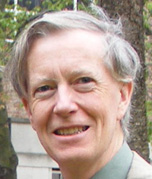 http://solidmodeling.org/bezier-award/i-braid-a-grayer-and-c-lang/
http://solidmodeling.org/bezier-award/i-braid-a-grayer-and-c-lang/
Alan Grayer joined the CAD Group at the Computer Laboratory, Cambridge University in 1971 and, under Charles Lang’ supervision, developed algorithms for the automatic machining of prismatic parts modelled in BUILD. These were machined on a model making machine, built by the Group in 1971 following an inspirational visit to Bézier at Renault in Paris. Alan was awarded his PhD in 1977. He contributed to the development of ROMULUS, a kernel modeller designed for building into CAD/CAM systems that was based on the ideas of the BUILD modellers. The first license to a customer was in 1978. A specific area of specialized development undertaken was the creation (under contract to CAM-I) of the Applications Interface Specification (1980), intended as a standardized API for solid modellers. Alan Grayer created Three-Space in 1985 together with Ian Braid and Charles Lang. They worked intensively on generalising models to include wires, sheets, solids, cells, and both manifold and non-manifold objects; adding new geometric types for curves and surfaces; blending techniques; local operations; toleranced models; and particularly the software architecture of the modellers and the precision of numerical calculations, and they developed ACIS, a totally new solid modeller, together with Spatial Technology, Inc. The ACIS business was acquired from Spatial Technology by Dassault Systčme in 2000.
10 Hans Hagen
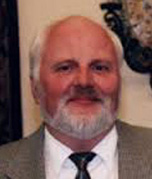 Hans Hagen has published over four hundred articles in journals, books and conference proceedings. Hans´s research interests are deep and very broad. His work concentrates on physically based modelling, curve and surface interrogation, topology-based visualization and variational design. Variational design is based on including energy minimization as an integral part of the algorithms and underlying mathematics. Hans Hagen has a strong background in Differential Geometry and Topology. His geometric modelling publication record started with a work on Geometric Splines, where he introduced a torsion continuous Spline Curve. After this success, which turned out to be influential, he developed together with Guido Brunnett and Paolo Santarelli the Variational Design methodology and a solution to the twist input and compatibility twist problem of the Coons patches. Triangular patches did not have “curvature modelling facilities” for many years. Variational Design and Surface interrogations are now industrial standards, set by Hans Hagen. These standards are included in most major CAD/ CAM Systems, especially in systems distributed through his cooperation partners at Fraunhofer ITWM, Kaiserslautern and DLR – Braunschweig, as well as direct industrial partners including car manufactures and aerospace industry . Hans Hagen always combines theory and applications, he got his high reputation in Industry and Academia this way.
Hans Hagen has published over four hundred articles in journals, books and conference proceedings. Hans´s research interests are deep and very broad. His work concentrates on physically based modelling, curve and surface interrogation, topology-based visualization and variational design. Variational design is based on including energy minimization as an integral part of the algorithms and underlying mathematics. Hans Hagen has a strong background in Differential Geometry and Topology. His geometric modelling publication record started with a work on Geometric Splines, where he introduced a torsion continuous Spline Curve. After this success, which turned out to be influential, he developed together with Guido Brunnett and Paolo Santarelli the Variational Design methodology and a solution to the twist input and compatibility twist problem of the Coons patches. Triangular patches did not have “curvature modelling facilities” for many years. Variational Design and Surface interrogations are now industrial standards, set by Hans Hagen. These standards are included in most major CAD/ CAM Systems, especially in systems distributed through his cooperation partners at Fraunhofer ITWM, Kaiserslautern and DLR – Braunschweig, as well as direct industrial partners including car manufactures and aerospace industry . Hans Hagen always combines theory and applications, he got his high reputation in Industry and Academia this way.
11 Chris Hoffmann, 2011 Pierre Bézier Award Recipient
http://solidmodeling.org/bezier-award/christoph-m-hoffmann/
Christoph Hoffmann research focuses on geometric and solid modeling, its applications to manufacturing and science, and the simulation of physical systems. The research includes, in particular, research on geometric constraint solving and the semantics of generative, feature-based design. Before joining the Purdue faculty, Professor Hoffmann taught at the University of Waterloo, Canada. He has also been a visiting professor at the Christian-Albrechts University in Kiel, West Germany (1980), and at Cornell University (1984-1986). He began his research in geometric modeling on occasion of working with John Hopcroft during a 2-year visit to Cornell. Since then, he has published numerous papers and a monograph in the field. A proponent of rigorous semantics, he articulated the robustness problem hindering shape computations and worked out procedural semantics for form features in CAD systems, through a neutral representation. This work also included addressing the persistent naming problem and geometric constraint solving. Professor Hoffmann is the author of the books Group-Theoretic Algorithms and Graph Isomorphism and Geometric and Solid Modeling: An Introduction. With a team of colleagues at Purdue, Professor Hoffmann simulated the 9/11 attacks on the Pentagon and the World Trade Center, receiving national media attention for this work. His involvement with the Solid Modeling conference series dates to its inception in 1991.
12 Charles Lang, 2008 Pierre Bézier Award Recipient
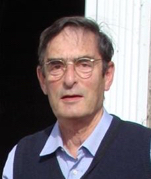 http://solidmodeling.org/bezier-award/i-braid-a-grayer-and-c-lang/
http://solidmodeling.org/bezier-award/i-braid-a-grayer-and-c-lang/
Charles Lang started the CAD Group at the Computer Laboratory, Cambridge University in 1965 under the direction of Prof. Maurice Wilkes. The group, with Lang, Braid and Grayer, made many fundamental contributions to practical solid modelling and their work has had a profound influence on today’s commercial solid modelling systems. Initial experiments in solid modelling were made in 1969, with an emphasis on software system components, computer graphics and computational geometry. Charles Lang was Ian Braid’s supervisor, who developed the BUILD boundary representation modeller, the most advanced such system of its day. In 1974 Charles Lang, together with other members of the CAD Group, (Ian Braid, Alan Grayer and Peter Veenman), formed Shape Data Ltd. At Shape Data they developed the ROMULUS modeller, based on the ideas of the BUILD modellers, but engineered as a commercial product written in Fortran. At the end of 1985 Alan, Ian and Charles left Shape Data to form Three-Space Ltd which developed ACIS, a totally new solid modeller, together with Spatial Technology, Inc. They worked intensively on generalising models. The ACIS business was acquired from Spatial Technology by Dassault Systčme in 2000. Any commercial CAD system using ACIS or Parasolid as its kernel owes a large part of its success to the work of Charles Lang, Ian, Alan and their many colleagues over a period of more than thirty years. ACIS was also found to be an invaluable research tool by many university research projects.
13 Martti Mantylä
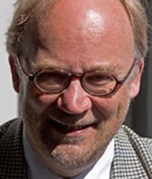 Martti Mantylä is a Full Professor at Aalto University, with dual appointment in the Department of Computer Science and the Department of Mechanical Design and Production. His present focus area is ICT applied in industrial production. He has also worked extensively in mobile user interfaces and services, digital services, and internet research. During his doctoral studies and postdoctoral work, Mäntylä worked on principles of boundary representation type solid models, in particular so-called Euler operators, focusing especially on their expressive power and other properties. He is best known for his 1988 textbook An Introduction to Solid Modeling that introduced in detail the half-edge boundary representation data structure that has influenced the design of some later modelers. From 1999 to 2008, he was the founding Director of the Helsinki Institute for Information Technology (HIIT), a joint research centre of Helsinki University of Technology and University of Helsinki. From 2009 to 2013, Mäntylä was the Chief Strategy Officer at the EIT ICT Labs KIC.
Martti Mantylä is a Full Professor at Aalto University, with dual appointment in the Department of Computer Science and the Department of Mechanical Design and Production. His present focus area is ICT applied in industrial production. He has also worked extensively in mobile user interfaces and services, digital services, and internet research. During his doctoral studies and postdoctoral work, Mäntylä worked on principles of boundary representation type solid models, in particular so-called Euler operators, focusing especially on their expressive power and other properties. He is best known for his 1988 textbook An Introduction to Solid Modeling that introduced in detail the half-edge boundary representation data structure that has influenced the design of some later modelers. From 1999 to 2008, he was the founding Director of the Helsinki Institute for Information Technology (HIIT), a joint research centre of Helsinki University of Technology and University of Helsinki. From 2009 to 2013, Mäntylä was the Chief Strategy Officer at the EIT ICT Labs KIC.
14 Ralph Martin
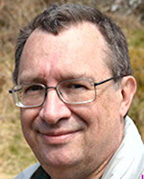 Ralph Martin has been working in geometric modeling since 1979, when he started his PhD at Cambridge University. His work on principal patches alerted the community to the potential uses of cyclides for geometric modeling. Since then, he has made contributions to many areas of solid modeling, and is best known for his work on reverse engineering with Tamas Varady, their seminal paper setting the agenda for work in this field. Several other papers on this topic identified key subproblems in this area, and provided solutions to them which are still of use today. He is also known for work on a variety of other topics such as sketch input and shape retrieval. Work in 2015 with Malcolm Sabin and his student Zhibin Niu has lead to a feature recognition method which runs in linear time. The reverse engineering algorithms have been endorsed by Geomagic Inc., a market leading American software corporation with subsidiaries in Europe and Asia, and incorporated into their software product suite.
Ralph Martin has been working in geometric modeling since 1979, when he started his PhD at Cambridge University. His work on principal patches alerted the community to the potential uses of cyclides for geometric modeling. Since then, he has made contributions to many areas of solid modeling, and is best known for his work on reverse engineering with Tamas Varady, their seminal paper setting the agenda for work in this field. Several other papers on this topic identified key subproblems in this area, and provided solutions to them which are still of use today. He is also known for work on a variety of other topics such as sketch input and shape retrieval. Work in 2015 with Malcolm Sabin and his student Zhibin Niu has lead to a feature recognition method which runs in linear time. The reverse engineering algorithms have been endorsed by Geomagic Inc., a market leading American software corporation with subsidiaries in Europe and Asia, and incorporated into their software product suite.
15 Hartmut Prautzsch
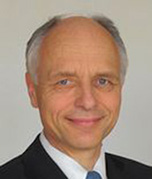 Hartmut Prautzsch is a longtime key contributor to boundary representations of Solid Modeling and Bernstein-Bezier techniques in particular. Hartmut Prautzsch popularized and made accessible, via online software and three books, the Bernstein-Bezier toolkit, as we know it today and thereby strongly influenced Solid Modeling. He investigated knot insertion and degree raising for univariate and simplex splines, developed an intricate fast degree-raising algorithm and showed how to construct higher degree Bézier representations by knot insertion. He worked on B-spline constructions via de Casteljau’s algorithm, on convexity conditions for several B-representations as, e.g., multivariate B-patch representations, and derived a basis and knot insertion for Chebyshev splines with arbitrary connection matrices. Using projective geometry, he constructed quadric splines, B-spline representations for circles and spheres and completed the C1 analysis for local corner cutting. With his freeform splines, low degree regular Gk constructions became possible. He successfully analyzed the convergence of subdivision and degree elevation algorithms and pioneered boxspline, half-boxspline and matrix subdivision. He showed how to analyze subdivision surfaces for Gk smoothness at their extraordinary points, showed how to construct Gk subdivision schemes for arbitrary meshes and worked on lower degree bounds for such schemes. He succeeded in analyzing midpoint subdivision of any order and genneralized these results for weighted averaging schemes (WAVES). As an alternative to triangular meshes, he proposed fan clouds and developed a topologically unrestricted morphing algorithm based on shadows of Cartesian products. From 2002-2014, he served as Co-Editor-in-Chief for CAGD.
Hartmut Prautzsch is a longtime key contributor to boundary representations of Solid Modeling and Bernstein-Bezier techniques in particular. Hartmut Prautzsch popularized and made accessible, via online software and three books, the Bernstein-Bezier toolkit, as we know it today and thereby strongly influenced Solid Modeling. He investigated knot insertion and degree raising for univariate and simplex splines, developed an intricate fast degree-raising algorithm and showed how to construct higher degree Bézier representations by knot insertion. He worked on B-spline constructions via de Casteljau’s algorithm, on convexity conditions for several B-representations as, e.g., multivariate B-patch representations, and derived a basis and knot insertion for Chebyshev splines with arbitrary connection matrices. Using projective geometry, he constructed quadric splines, B-spline representations for circles and spheres and completed the C1 analysis for local corner cutting. With his freeform splines, low degree regular Gk constructions became possible. He successfully analyzed the convergence of subdivision and degree elevation algorithms and pioneered boxspline, half-boxspline and matrix subdivision. He showed how to analyze subdivision surfaces for Gk smoothness at their extraordinary points, showed how to construct Gk subdivision schemes for arbitrary meshes and worked on lower degree bounds for such schemes. He succeeded in analyzing midpoint subdivision of any order and genneralized these results for weighted averaging schemes (WAVES). As an alternative to triangular meshes, he proposed fan clouds and developed a topologically unrestricted morphing algorithm based on shadows of Cartesian products. From 2002-2014, he served as Co-Editor-in-Chief for CAGD.
16 Ari A. G. Requicha, 2007 Pierre Bézier Award Recipient
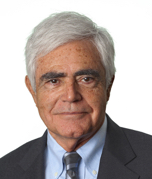 http://solidmodeling.org/bezier-award/a-requicha-and-h-voelcker/
http://solidmodeling.org/bezier-award/a-requicha-and-h-voelcker/
Aristides Requicha led the Production Automation Project (PAP) at the University of Rochester from the early 1970s to the mid 1980s, together with Herbert Voelcker. The PAP was the premier academic group working in what became known as solid modeling. They established most of the theoretical foundations for the field, by using point-set and algebraic topology. These algorithms were embodied in the PADL-1 and PADL-2 systems developed at PAP in the early 1970s, which was the first to demonstrate correct handling of Boolean operations for objects with overlapping boundaries. Set membership classification emerged as an important concept, which generalized such operations as point inclusion and clipping. Requicha become a Professor of Computer Science at USC in the 80’s and led the Programmable Automation Laboratory (PAL) at USC until recently. PAL focused on applications of solid modeling to automation of manufacturing and inspection operations, and also worked on the difficult problem of robust geometrical computation. The Lab attacked the problems of recognition of (possibly interacting) machinable features, automatic fixturing, and CMM (Coordinate Measuring Machine) inspection. Recently, he has been working on the construction of arbitrary shapes by robotic self-assembly. One of his major and lasting contributions to solid modeling is the training a cadre of graduate students, several of whom have become leaders in the solid modeling field.
17 Richard Riesenfeld, 2009 Pierre Bézier Award Recipient
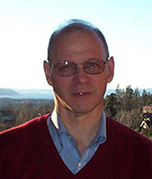 http://solidmodeling.org/bezier-award/richard-riesenfeld-and-elaine-cohen/
http://solidmodeling.org/bezier-award/richard-riesenfeld-and-elaine-cohen/
Richard Riesenfeld’s PhD dissertation in 1973 introduced B-splines as a powerful representation and design technique for geometric modeling and CAD/CAM. In 1974, shortly after arriving at Utah and with Cohen’s support, Riesenfeld and Barnhill organized at the University of Utah the first International Conference on Computer Aided Geometric Design (CAGD) to bring together for the first time many international pioneers in disparate activities, many of whom had never met but all of whom were pursuing an early vision of CAD/CAM. Pierre Bézier and Steve Coons were featured speakers. In 1979 he published with Jeffrey Lane the Lane-Riesenfeld Algorithm for subdivision of Bézier surfaces and refinement of uniform B-spline surfaces. Riesenfeld and Cohen collaborated with Lyche to develop the Oslo Algorithms to enable simultaneous knot insertion at multiple locations in a B-spline representation. In most contemporary CAD/CAM systems the greater representational power of nonuniform B-splines, as originally proposed in Riesenfeld’s dissertation, has supplanted uniform B-splines that were favored for simplicity in early CAD/CAM systems. In the areas of representational algorithms, Cohen and Riesenfeld have contributed several seminal papers in CAGD, including important works in box splines, cone splines, and simplex splines. In 1980, Cohen and Riesenfeld began the Alpha_1 geometric modeling test-bed. They founded the spin-off company Engineering Geometry Systems (EGS) which in 1995 introduced the FeatureCAM line of products. EGS’s international success led to its being acquired in 2005, by Delcam, the world’s leading CAM vendor. Subsequently, in 2014, Delcam was, in turn, acquired by Autodesk.
18 Jarek Rossignac, 2014 Pierre Bézier Award Recipient
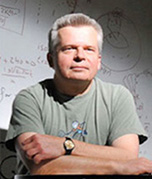 http://solidmodeling.org/bezier-award/jaroslaw-jarek-rossignac/
http://solidmodeling.org/bezier-award/jaroslaw-jarek-rossignac/
Jarek Rossignac worked with Ari Requicha to define constant-radius blending, constraints, and offsetting operations in CSG. This work is still being cited 30 years later. He has subsequently extended this work to variable radius blending, providing a set theoretic formulation and simple control. His work on selective geometric complexes and on constructive non-regularized geometry helped to form the basis for non-manifold boundary representations, also inspiring advances in commercial products. His pioneering work in 1993 on mesh simplification also inspired a great deal of subsequent research, and the principles he introduced have found their way into several commercial products. In a series of papers beginning in 1998, he described ways of compressing geometry and querying compact topological data structures. The work has been incorporated into standards such as MPEG-4, and the techniques have been incorporated into several commercial products. In addition to his research contributions, Rossignac’s service in conference activities has also contributed greatly to the Solid Modeling community. In 1991, he was a co-founder of the Solid Modeling symposia. The series of Solid Modeling symposia, later expanded and renamed Solid and Physical Modeling, has been the premier conference for over 20 years for the dissemination of new research in Solid Modeling and Computer Aided Design. In 2000, he co-founded the Solid Modeling Association, which he also chaired until 2005.
19 Malcolm Sabin, 2010 Pierre Bézier Award Recipient
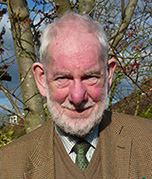 http://solidmodeling.org/bezier-award/malcolm-sabin/
http://solidmodeling.org/bezier-award/malcolm-sabin/
Malcolm Sabin was a pioneer of Computer Aided Design (CAD). During the late 1960s and early 1970’s, he played a leading role in developing a CAD system called Numerical Master Geometry (NMG) at the British Aircraft Corporation, a forerunner of today’s EADS and Airbus companies. It clearly demonstrated the practical benefits to be obtained by using such technology, which in turn accelerated the uptake of CAD as a useful tool in industry. His next major role was as advisor to a government funding panel, reviewing both industrial and academic research. His input undoubtedly helped to strengthen the quality and relevance of much of the UK research being done at that time. Since then he has been in turn a Director of FEGS, known for its finite element mesh generation and CAD model repair solutions, and then of Numerical Geometry Ltd., Sabin’s own consultancy company. At the same time he has also had a spell as a visiting Professor at Liverpool University. A major theme of Sabin’s research has been subdivision surfaces, starting with his classic 1978 work on the behaviour of recursive division surfaces near extraordinary points. This work brought techniques of eigenanalysis to bear on the problem. Sabin has a long career of high achievement from many points of view: pioneering research, insight into a wide range of geometry problems, helping to steer development of that field, with encouragement, support, and stimulation for many junior researchers, and most of all, multiple lasting and significant contributions over a span of more than 40 years, many of which are still relevant and useful long after they first appeared.
20 Thomas W. Sederberg, 2013 Pierre Bézier Award Recipient
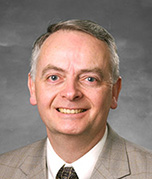 http://solidmodeling.org/bezier-award/thomas-w-sederberg/
http://solidmodeling.org/bezier-award/thomas-w-sederberg/
Thomas W. Sederberg showed in his thesis how to compute an exact implicit equation for Bézier curves and surfaces, and revealed that the implicit equation for a generic bicubic patch is degree 18, so two generic bicubic patches intersect in a curve of algebraic degree 324. He next invented piecewise algebraic surfaces, a technique for creating low-degree implicit surfaces suitable for free-form design. Piecewise algebraic surfaces are defined using trivariate Bézier solids, a tool he also used in Free-Form Deformation. The Bézier representation was also central to his invention of the method of Bézier-clipping, a series of algorithms for robustly computing intersections. His “moving surfaces” can elegantly implicitize a surface with base points. Applying this method to curves led to his discovery of the so-called mu-basis for parametric curves. His non-uniform Catmull-Clark surfaces provided a surface representation that is a superset of both Catmull-Clark surfaces and non-uniform bicubic B-spline surfaces. And his 2003 invention of T-Splines allows for local refinement of a spline surface of arbitrary topology. He co-founded a company to commercialize T-splines, which was acquired by Autodesk in December 2011. Because T-splines provide local refinement and watertight models, they have proven to be ideal for isogeometric analysis, which avoids the need for meshing.
21 Hans-Peter Seidel
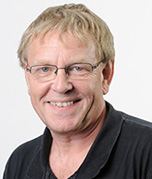 Hans-Peter Seidel is the scientific director and chair of the computer graphics group at the Max Planck Institute (MPI) for Informatics and a professor of computer science at Saarland University, Saarbrücken, Germany. Hans-Peter Seidel is recognized for his technical contributions to the theory of B-splines and his groundbreaking work on level-of-detail and multi-resolution modeling with special emphasis on the development of powerful new metaphors for editing and shape deformation. In addition to his technical contributions, he is equally recognized for his continued and successful role in training and mentoring young researchers, who have since established themselves as leading faculty and researchers, and for his central role in advancing the field in Germany and Europe at large. He has actively published at the ACM Solid Modeling Symposium from the start, and he has served on the program committee multiple times. He has been a member of SMA from the outset, and he served on the SMA Executive Committee from 2003 – 2009. Hans-Peter Seidel’s contributions have had significant impact and have helped to shape the field. For his work, Seidel has received numerous distinctions and awards, including the DFG Leibniz Prize (2003), and the Eurographics Distinguished Career Award (2012).
Hans-Peter Seidel is the scientific director and chair of the computer graphics group at the Max Planck Institute (MPI) for Informatics and a professor of computer science at Saarland University, Saarbrücken, Germany. Hans-Peter Seidel is recognized for his technical contributions to the theory of B-splines and his groundbreaking work on level-of-detail and multi-resolution modeling with special emphasis on the development of powerful new metaphors for editing and shape deformation. In addition to his technical contributions, he is equally recognized for his continued and successful role in training and mentoring young researchers, who have since established themselves as leading faculty and researchers, and for his central role in advancing the field in Germany and Europe at large. He has actively published at the ACM Solid Modeling Symposium from the start, and he has served on the program committee multiple times. He has been a member of SMA from the outset, and he served on the SMA Executive Committee from 2003 – 2009. Hans-Peter Seidel’s contributions have had significant impact and have helped to shape the field. For his work, Seidel has received numerous distinctions and awards, including the DFG Leibniz Prize (2003), and the Eurographics Distinguished Career Award (2012).
22 Vadim Shapiro, 2015 Pierre Bézier Award Recipient
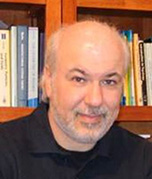 http://solidmodeling.org/bezier-award/vadim-shapiro/
http://solidmodeling.org/bezier-award/vadim-shapiro/
Vadim Shapiro has produced relevant contributions to the foundations of shape representations ans the unification of geometry and analysis. He has published groundbreaking work that has been characterized by mathematical rigor as well as engineering insight. He proposed a constructive (set) theory for construction, conversion, and maintenance of geometric representations based on space decompositions, with applications to conversion problems, to the systematic construction of implicit representations using R-functions and to the understanding of the limitations of modern multi-representation CAD systems. Another fundamental theme in Vadim Shapiro’s work has been related to the development of an algebraic framework for unifying geometric and physical representations. His work has been instrumental for formulating the notions of parametric families and identifying limitations of persistent naming problem, for developing new combinatorial representations and languages based on physical laws to support the computational design process, and for the simultaneous representation of topology, geometry and physics. Vadim Shapiro also extended implicit modeling to physical design and analysis problems, including modeling of heterogeneous structures Meshfree, query-based, simulation and optimization.
23 Tamas Varady
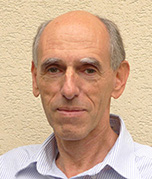 Tamas Varady is an accomplished researcher in CAD/CAM since 1976, when he first joined the Computer and Automation Research Institute of the Hungarian Academy of Sciences. He has led the Geometric Modeling Laboratory in the Institute for more than 20 years. His research spans areas of blending and filleting, surface design, geometry techniques, setback blending, healing surfaces, reverse engineering, segmentation and reconstruction, N-sided patches and transfinite interpolation. He pioneered the integration of surfaces into solid modeling using the BUILD modeler as he collaborated closely with researchers in the CAD group at Cambridge University and Shape Data Ltd. His work influenced and inspired surface integration in Parasolid and ACIS, as he worked with developers of these industry standard modelers. In 2003 Dr. Varady accepted the position of CTO at Geomagic, Inc. where he guided the company in developing technology for reverse engineering. He also provided motivation and held primary responsibility for developing their conceptual modeler Geomagic Studio. In 2010 Dr. Varady accepted a faculty appointment at the Budapest University of Technology and Economics in Computer Science, where he is a full professor now. At the university, he has focused on N-sided surface patches to eliminate topology problems of surface modeling. Dr. Varady has always served as a mentor and developer of students and young researchers, and has been an inspiration to his collaborators. In addition to his research and professional accomplishments, he contributed to many professional organizations, such as the editorial boards of CAD and CAGD, and various CAD conference organization committees such as ACM Solid Modeling.
Tamas Varady is an accomplished researcher in CAD/CAM since 1976, when he first joined the Computer and Automation Research Institute of the Hungarian Academy of Sciences. He has led the Geometric Modeling Laboratory in the Institute for more than 20 years. His research spans areas of blending and filleting, surface design, geometry techniques, setback blending, healing surfaces, reverse engineering, segmentation and reconstruction, N-sided patches and transfinite interpolation. He pioneered the integration of surfaces into solid modeling using the BUILD modeler as he collaborated closely with researchers in the CAD group at Cambridge University and Shape Data Ltd. His work influenced and inspired surface integration in Parasolid and ACIS, as he worked with developers of these industry standard modelers. In 2003 Dr. Varady accepted the position of CTO at Geomagic, Inc. where he guided the company in developing technology for reverse engineering. He also provided motivation and held primary responsibility for developing their conceptual modeler Geomagic Studio. In 2010 Dr. Varady accepted a faculty appointment at the Budapest University of Technology and Economics in Computer Science, where he is a full professor now. At the university, he has focused on N-sided surface patches to eliminate topology problems of surface modeling. Dr. Varady has always served as a mentor and developer of students and young researchers, and has been an inspiration to his collaborators. In addition to his research and professional accomplishments, he contributed to many professional organizations, such as the editorial boards of CAD and CAGD, and various CAD conference organization committees such as ACM Solid Modeling.
24 Herbert Voelcker, 2007 Pierre Bézier Award Recipient
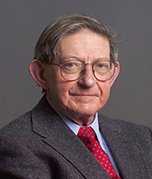 http://solidmodeling.org/bezier-award/a-requicha-and-h-voelcker/
http://solidmodeling.org/bezier-award/a-requicha-and-h-voelcker/
Herbert Voelcker established the Production Automation Project (PAP) at the University of Rochester in 1972 and led it, with Aristides Requicha as senior scientist, to mid-1985. The PAP was the premier academic group working in what became known as solid modeling. They established most of the theoretical foundations for the field, using point-set and algebraic topology, and devised the first formally and computationally correct algorithms for ‘doing’ Boolean combinations of objects with overlapping boundaries. These algorithms were embodied in the PADL-1 and PADl-2 CSG-based modeling systems, whose source code was made publicly available in 1978 and 1982 and commissioned at hundreds of companies and universities. Voelcker and Requicha set forth the basic concepts of solid modeling as we know them today through regular university courses at Rochester, Cornell, and USC, and through tutorials taught at many conferences and several series of reports and papers. They also trained a cadre of graduate students, some of whom have become leaders in the solid modeling field. The PAP was disbanded in 1985/86 because, amongst other reasons, it was going stale. Requicha moved into computer science at USC, and Voelcker joined Cornell as the Lake Professor of Mechanical Engineering after spending a year helping to reorganize the NSF’s Engineering Directorate. He worked subsequently with Gershon Kedem on the Raycasting Engine, an elegant, highly parallel accelerator for solid modeling that was swept aside by the Wintel wave that washed through industry in the 1990’s. Voelcker is ending a 60-year career teaching mechanical design at Cornell and pondering assembly principles.

